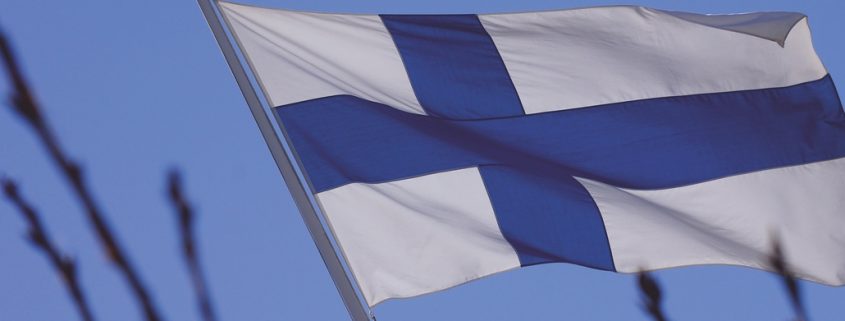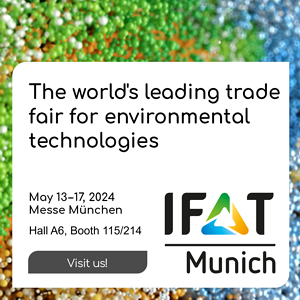The Finnish Road Map to Circular Economy
At the first World Circular Economy Forum 2017 (WCEF) in June this year, the host country Finland shared its own inspiration as there are plans to turn the vision of the country’s circular economy road map into reality and deliver concrete benefits across all sectors of business and society.
“Leading the cycle – Finnish road map to a circular economy 2016–2025” outlines the steps to sustainable success, the Finnish Innovation Fund Sitra feels confident. This national road map was drafted under the direction of Sitra in co-operation with the country’s Ministry of the Environment, the Ministry of Agriculture and Forestry, the Ministry of Economic Affairs and Employment, the business sector and other key stakeholders. Finland would have a real opportunity to create sustainable well-being and a successful carbon-neutral circular economy over the next 5 to 10 years, the Finnish Innovation Fund is convinced. A circular economy would maximize the use of materials and retain their value in the loop for as long as possible: Rather than offering products, the foundation for earnings would be services and intelligence-based digital solutions.
As reported, “Finland’s national circular economy road map is beginning to create new solutions for Finland to offer a world challenged by climate change, dwindling natural resources and urbanization”. The first circular economy solutions were based on areas where Finland is traditionally strong, thus making it possible to offer tens of thousands of new jobs and generating billions of euros. Estimates say that this type of management would generate 2 to 3 billion Euro in additional value each year by 2030. The Club of Rome is optimistic that over 75,000 new jobs will be created.
“The change requires co-operation across sectoral and industrial boundaries,” Sitra wrote. “In many cases, the most attractive opportunities for new operating methods, for services made possible by digitization and for extending the circulation of materials can be found somewhere in the middle.” According to Sitra Director Mari Pantsar, the effectiveness of new solutions “ultimately stems from the fact that they can be expanded and duplicated both elsewhere in Finland and around the world”. The Minister of Agriculture and the Environment Kimmo Tiilikainen hopes that the circular economy will boost Finland’s economic growth and competitiveness, Sitra gave account. According to him, the circular economy road map brings together a large number of outstanding pilots. In addition to key projects, some examples of pilots following the road map include:
■ an initiative to recover waste heat;
■ Central Finland’s investment in the use of biogas for transport;
■ Helsinki Region’s plans to switch to high-blend biofuels;
■ a joint VTT and Aalto University research project on new cellulose-based materials;
■ plans in the Lappeenranta region to switch from using imported fossil fuels to domestic renewable energy for its transport needs;
■ City of Turku plans to pilot a zero-waste region;
■ a joint project of the forestry sector and Tekes (the Finnish Funding Agency for Technology and Innovation, a part of Finnish Ministry of Employment and the Economy) regarding the utilization of forestry by-products;
■ a Finnish Technology Industries and University of Jyväskylä project to improve the efficiency of mobile phone and tablet collection.
Based on Finland’s traditional strengths
The first steps toward a circular economy reportedly will be taken by means of five focus areas, which are based on Finland’s traditional strengths. “In the first focus area, regional co-operation brings sustainable local food to everyday life: Public institutional kitchens not only use locally produced food that promote nutrient cycling, they also allow producers and processors to introduce new consumer-oriented products through their co-operation,” Sitra informed. In the second focus area, for example, valuable and rare materials primarily taken from electrical and electronic scrap are recovered for re-use. In the third focus area, Finland is intended to become a global host nation for the circular economy (in June 2017, Sitra had hold the international circular economy conference in Helsinki). In the fourth focus area, export concepts involving low-carbon and intelligent transportation are created. “In the fifth focus area, forestry bio-products will be taken from laboratories for extensive testing; new products obtained from the forest that replace fossil fuels require extensive testing outside the laboratory in order to be commercialized,” the Finnish Innovation Fund Sitra outlined the content of the circular economy road map.
______________________________
Finland: Recycling Strengthened – More Waste is Burnt
According to the latest waste statistics, published on the 20th of December last year, Finland’s quantity of municipal waste has been 2.4 to 2.8 million tons per year after the turn of the millennium.
As reported, in 2015 nearly 90 percent of municipal waste was recovered – “so in this area the circular economy is coming to an end”. Nearly one-half of all municipal waste was burnt in Finland‘s seven incineration and co-incineration plants. One of the reasons is the growth in waste incineration. Mixed waste is turning into mere energy waste and separately collected waste into recycled material.
In 2015, Finland took a substantial stride towards top countries in recycling of separately collected municipal waste. The recycling quantities of electrical and electronic waste, glass and metal waste increased. “The most influencing factor was, however, the specification of the quantity and recycling of fiber packaging waste generated in the field of trade,” the statistics said. On the other hand, the disposal of waste in the bank on landfill sites has become rarer. In 2015, only good one tenth of municipal waste went to landfills.
Photo: pixabay
GR 32017










